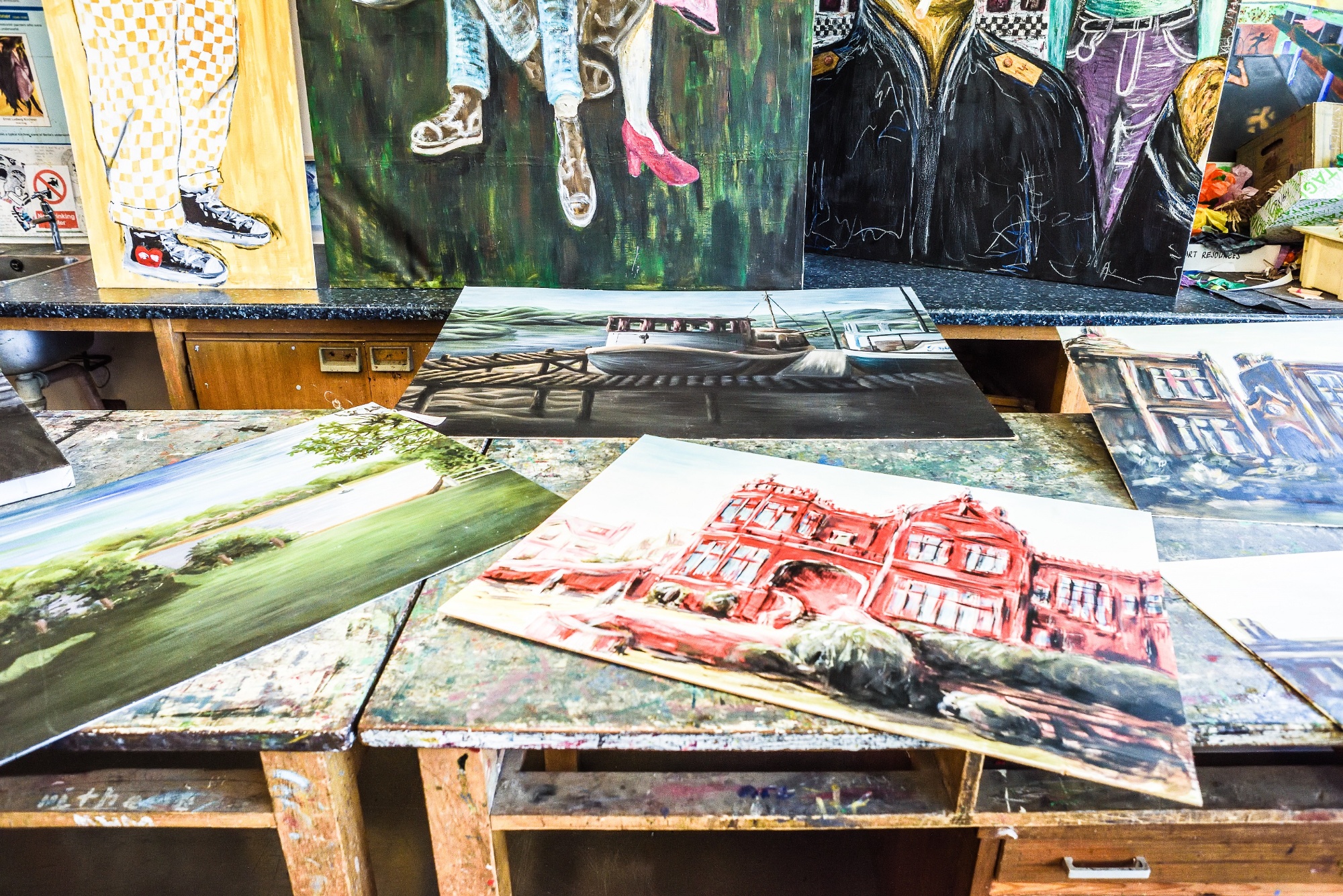
Why study art?
Art and design is a hands-on, imaginative subject which has immediate rewards. Art emphasises creative thinking, broadening the mind and feeding the soul. It is a subject which focuses on positive achievements, develops concrete products and fosters collaboration. Through the arts, you learn to observe, interpret, see different perspectives, analyse, and synthesise. Arts education develops a culture of innovation, and entrepreneurial spirit showing greater flexibility and adaptability in thinking.
The creative industry is one of the fastest growing economic sectors in the UK, responsible for 5.6% of jobs, and nearly 75bn of the UKs economy. In a world filled with visual stimulus – from Fine Art to computers, smartphones and other electronic devices, there is a huge demand for a creative mind. Many employers now actively seek those who have studied the arts. Steve Jobs (founder of Apple) was fond of saying his success was due to his hiring artists and musicians fascinated by technology rather than computer geeks. Top talent management agency, The Curve Group specialising in financial and business services, concurs: “Employees with an arts degree have developed more quickly in their roles from the start. They have discipline, confidence and can accept criticism.”
Curriculum Maps
The topics we study are outlined in our curriculum maps:
How will my child be assessed?
|
|
Assessment and Feedback Outline Approach |
|---|---|
|
KS3 |
Throughout Year 7 & 8 one project is taught per term. Within each of the projects, students have the opportunity to explore different subject matter, media, material and technique, as well as contextual influence. Success criteria for each topic, and task, is shared throughout lessons and is detailed on the feedback sketchbook sheets. A total of 4 pieces of work per project are assessed; an artist page, a drawing, an experimental page and the final piece which is produced. Students receive a wide array of feedback from formative self/peer-evaluation, to formative live review, and detailed written responses on summative marking |
|
KS4 |
GCSE Art & Design requires the completion of 2 components (personal portfolio and an externally set assignment).
The personal portfolio, which accounts for 60% of the GCSE, is centre set and is completed over Year 9, 10, and the first half of Year 11. This involves the completion of 3 coursework projects, using a variety of 2D and 3D methods.
The externally set assignment, accounts for 40% of the GCSE, and runs from January of Year 11 to May of Year 11.
Both components are assessed in the same way; against the assessment objectives below: AO1: Develop ideas through investigations, demonstrating critical understanding of sources. AO2: Refine work by exploring ideas, selecting and experimenting with appropriate media, materials, techniques and processes. AO3: Record ideas, observations and insights relevant to intentions as work progresses. AO4: Present a personal and meaningful response that realises intentions and demonstrates understanding of visual language.
These assessment objective areas are regularly shared with students throughout lessons, and are detailed in the assessment and feedback booklets. Students receive a wide array of feedback from formative self/peer-evaluation, to formative live review, and detailed written responses on summative marking |
|
KS5 |
A Level Fine Art requires the completion of 3 components (the personal portfolio, the personal study, and the externally set assignment).
The personal portfolio (48% of A Level) is an individual, and independently driven investigation into an area of interest, in response to an internally set title.
The personal study (12% of A Level) is a critical, and visual appraisal or theoretical study which directly relates to, and supports the students’ personal portfolio work. The personal study should focus on practical processes, materials, subjects or themes. It must include an introduction, a conclusion and a bibliography, and should not exceed 3500 words.
The externally set assignment (40% of the A Level) is completed from January of Year 13 until May of Year 13.
Both the personal and externally set components are assessed in the same way; against the assessment objectives below: AO1: Develop ideas through investigations, demonstrating critical understanding of sources. AO2: Refine work by exploring ideas, selecting and experimenting with appropriate media, materials, techniques and processes. AO3: Record ideas, observations and insights relevant to intentions as work progresses. AO4: Present a personal and meaningful response that realises intentions and demonstrates understanding of visual language.
These assessment objective areas are regularly shared with students throughout lessons, and are detailed in the assessment and feedback booklets. Students receive a wide array of feedback from formative self/peer-evaluation, to formative live review, and detailed written responses on summative marking. |